 by our College Data Analytics Team
by our College Data Analytics TeamICAOM total enrollment is approximately 54 students.
See racial/ethnic breakdown for all students.
Male/Female Breakdown of Graduate Students
About 80% of full-time grad students are women, and 20% men.
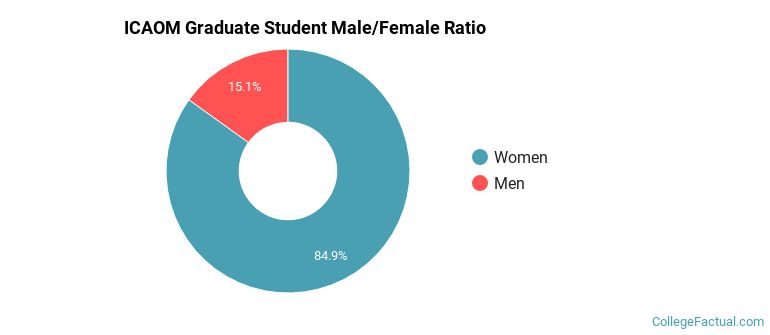
For the gender breakdown for all students, go here.
ICAOM Racial-Ethnic Breakdown of Graduate Students
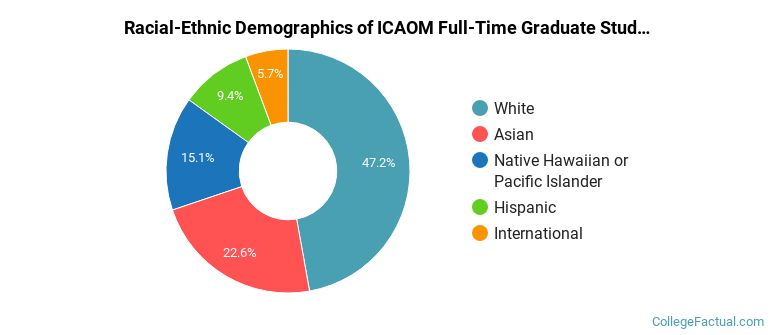
| Race/Ethnicity | Number |
|---|---|
| White | 27 |
| Asian | 11 |
| Hispanic | 9 |
| Native Hawaiian or Pacific Islander | 4 |
| Black or African American | 0 |
| International | 0 |
| Multi-Ethnic | 0 |
| Unknown | 0 |
See racial/ethnic breakdown for all students.
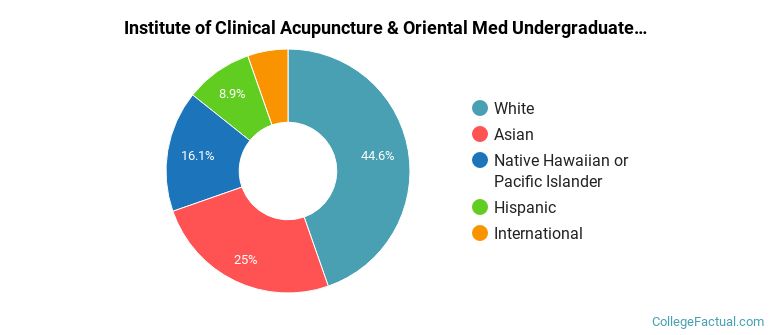
| Race/Ethnicity | Number |
|---|---|
| White | 30 |
| Asian | 11 |
| Hispanic | 9 |
| Native Hawaiian or Pacific Islander | 4 |
| Black or African American | 0 |
| International | 0 |
| Multi-Ethnic | 0 |
| Unknown | 0 |
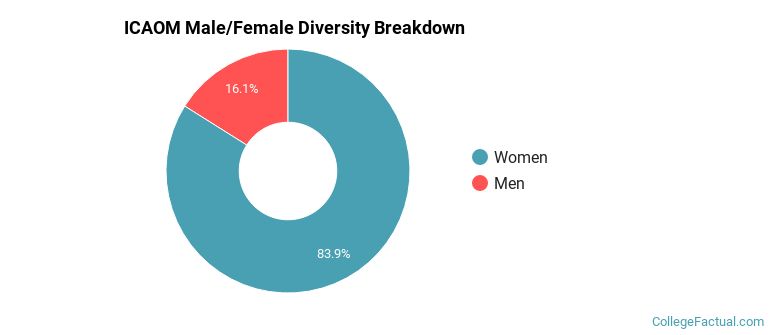
There are approximately 43 female students and 11 male students at ICAOM.
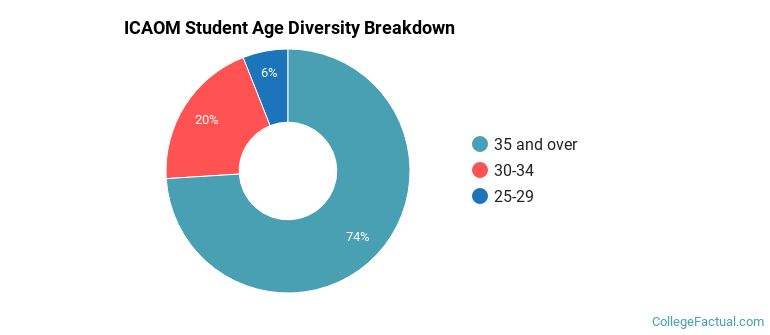
| Student Age Group | Amount |
|---|---|
| 35 and over | 37 |
| 30-34 | 10 |
| 25-29 | 3 |
| 18-19 | 0 |
| 20-21 | 0 |
| 22-24 | 0 |
| Under 18 | 0 |
Footnotes
*The racial-ethnic minorities count is calculated by taking the total number of students and subtracting white students, international students, and students whose race/ethnicity was unknown. This number is then divided by the total number of students at the school to obtain the racial-ethnic minorities percentage.
References